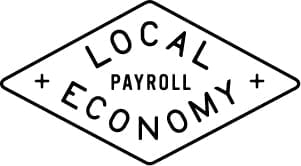Beginning January 1, 2020, Maine requires all employers with more 10 employees to allow 40 hours of
paid leave annually. The State has issued final guidelines, along with an informative FAQ that can be
found at https://www.maine.gov/labor/docs/2020/laborlaws/CombinedEarnedPaidLeaveFAQs.pdf.
The following are some important take-aways from Local Economy Payroll’s review of the law, and some
occasional commentary about how we will advise our clients to interpret the regulations. Please know
that we are not lawyers nor are we offering legal advice:
Employees: To determine if you have more than 10 employees, review your quarterly report to the
Maine Bureau of Unemployment Compensation. If you list more than 10 employees, you are required
to provide paid leave.
Paid Leave Rate of Pay: The rate of pay earned during paid leave will be the same as the regular hourly
rate paid to the employee the prior week. The regular hourly rate, in this instance, includes “earnings,
bonuses, commissions and other compensation that is paid or due based on actual work performed”.
We interpret this to mean that, if an employee earned a bonus or commission for work performed in the
previous week, those earnings would be included in the paid leave rate. We do not believe it means that
a bonus paid for performance during the previous quarter or similar period would be included.
Employees who work in restaurants that are subject to the tip credit must be paid the local minimum
wage during paid leave.
Amount of Paid Leave Earned: An employer with more than 10 employees must allow their employees to
earn 1 hour of paid leave for every 40 hours worked, up to a maximum of 40 hours annually under the
law. An employer can allow employees to earn more than 40 hours, but they must allow them at least
40 hours of paid leave if they work 1,600 hours during a 12-month period. Local Economy Payroll will
use a rate of .025 hours of paid leave for every hour worked, up to 40 hours annually.
If You Already Have a Paid Leave or Paid Sick Time Policy: Employers can provide a paid leave policy
that is more generous than 1 hour for every 40 hours worked. However, if you currently have a policy
that provides 40 hours of paid leave annually, it will probably have to be adjusted to ensure that the
paid leave hours accrue to employees at a rate of 1 hour for every 40 hours worked. Local Economy
Payroll can help you make this adjustment.
Rules for Payment of Earned-but-Unused Paid Leave if an Employee Leaves the Company: The State of
Maine does not require employers to pay unused paid leave (accrued vacation or sick time) upon an
employee’s termination. HOWEVER, if you have a policy of paying vacation and/or sick time to
departing employees, you must compensate departing employees for accrued-but-unused paid leave as
well. Be sure to review your policies, and if you don’t pay terminated employees for accrued vacation
and/or sick time, it is advisable to put it in writing in your company’s employee handbook or elsewhere.
Qualifying for Paid Leave: The maximum amount of time that employees can be required to work
before they are allowed to take paid leave is 120 days, but paid leave begins to accrue on the first day of
employment.
Notification: Employees must give “reasonable notification” to their employers for an absence related
to illness, emergency, or sudden necessity. Local Economy Payroll advises that this pretty much means
that under these circumstances, no notice is required, aside from a phone call letting the employer
know that the employee will not be coming to work. Under non-illness or emergency circumstances,
the employer may require up to four weeks’ notice.
